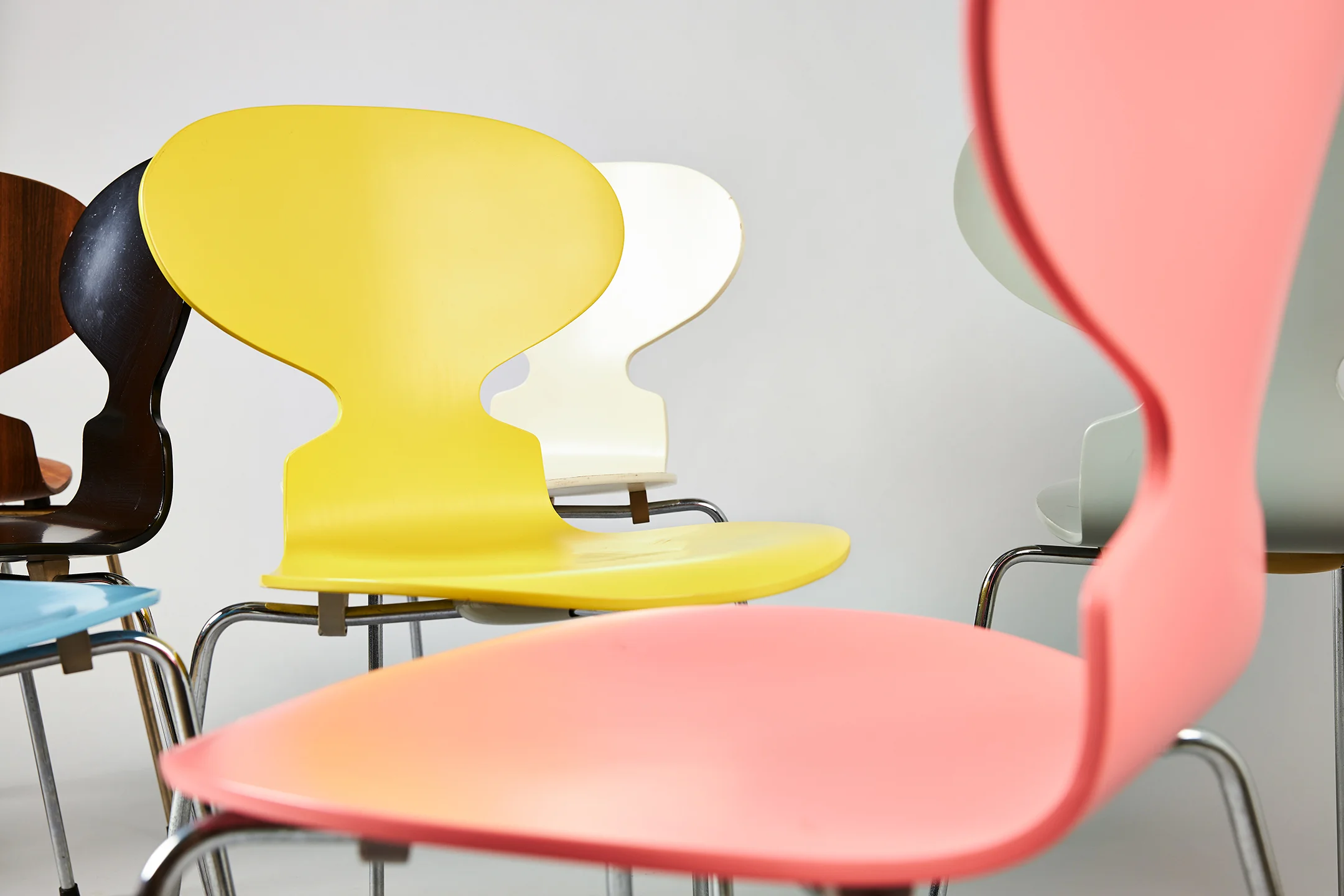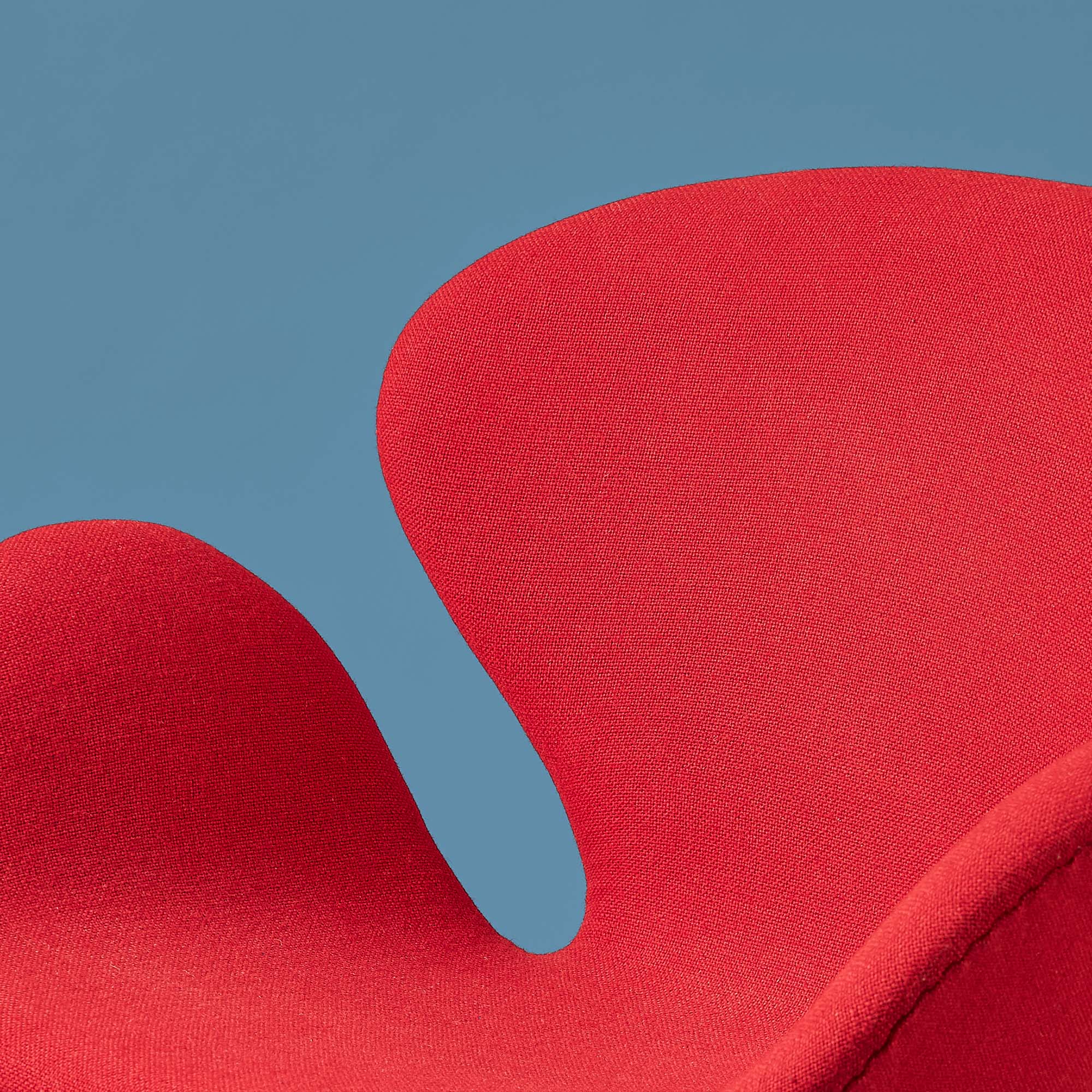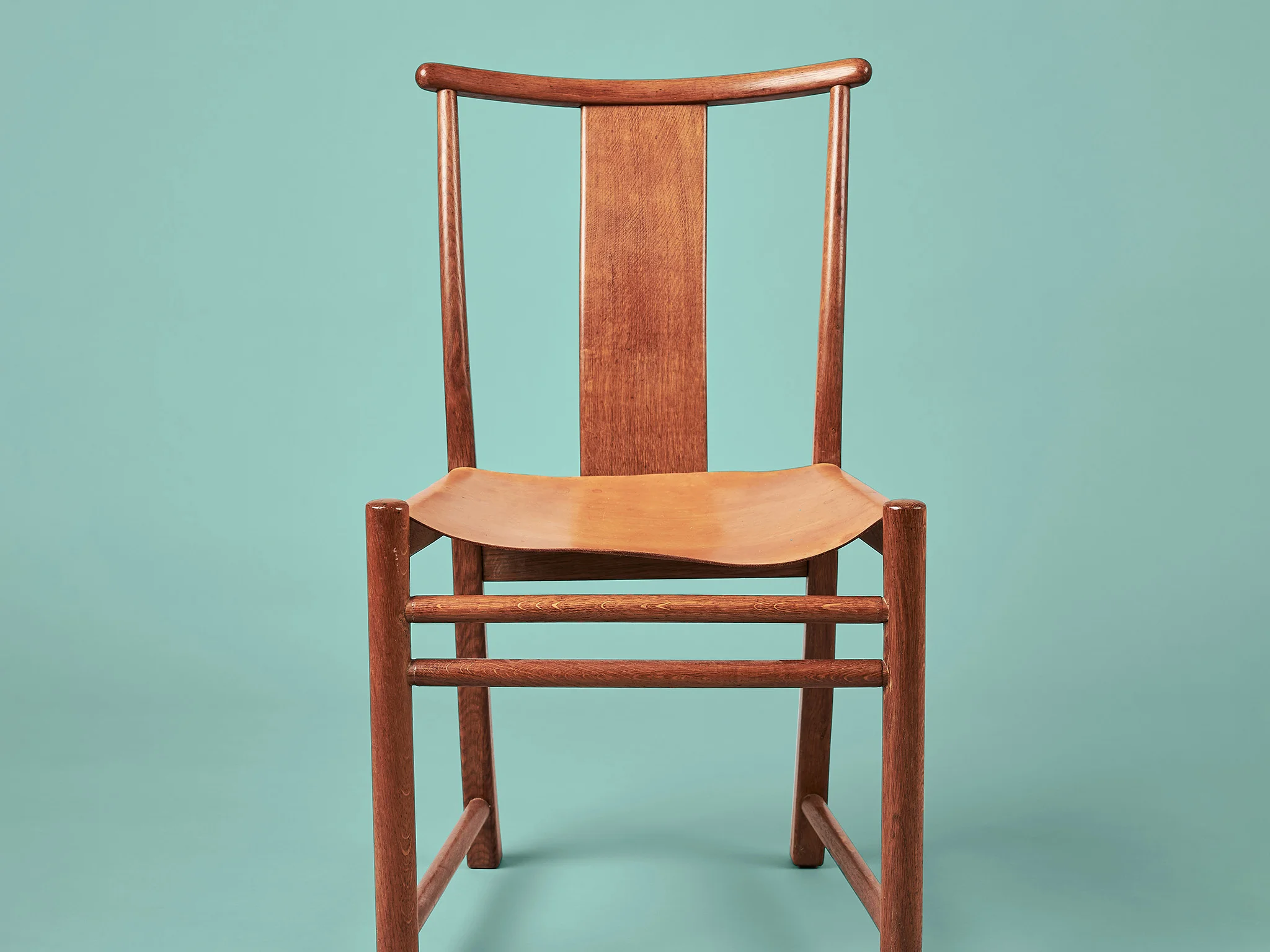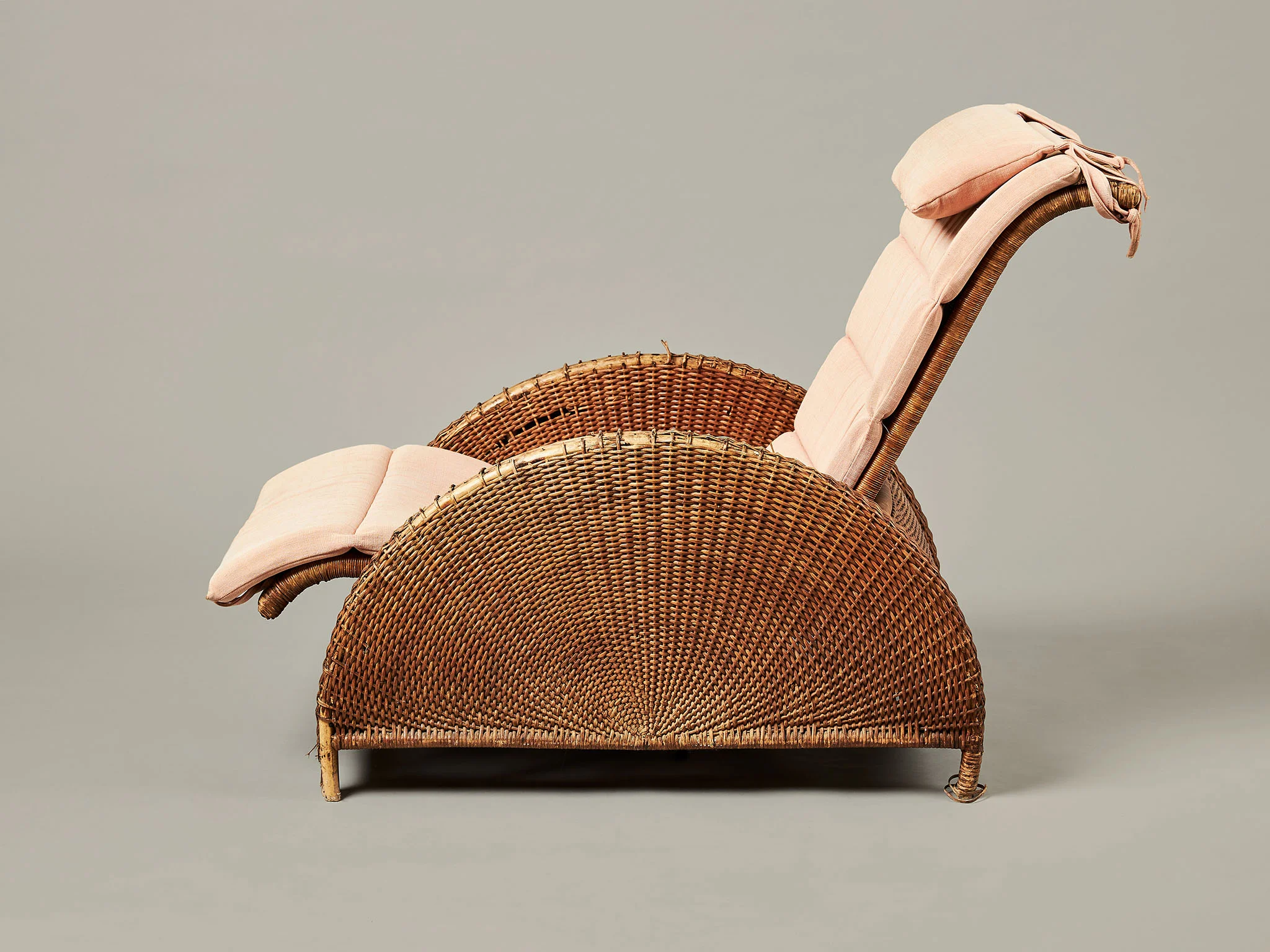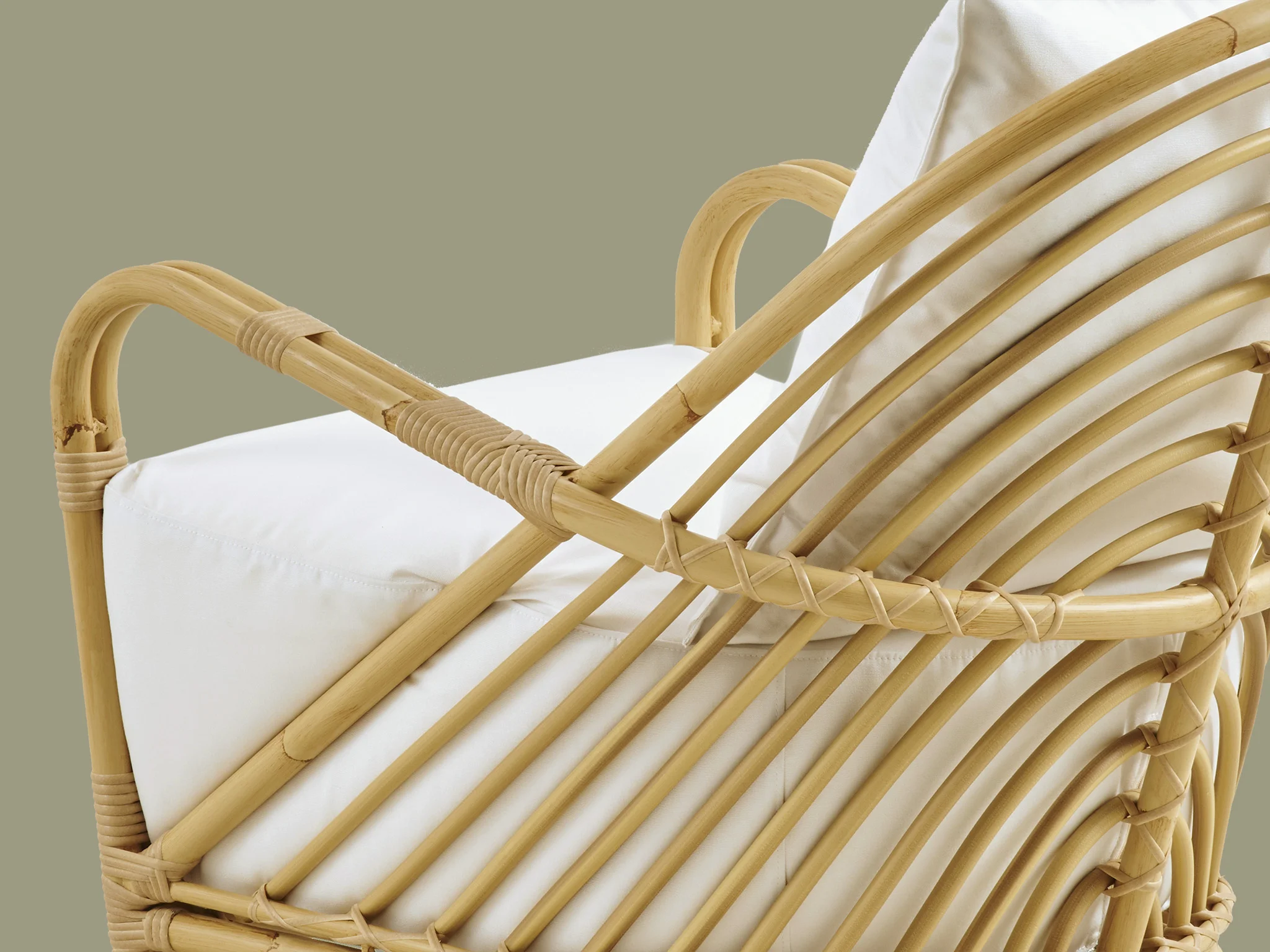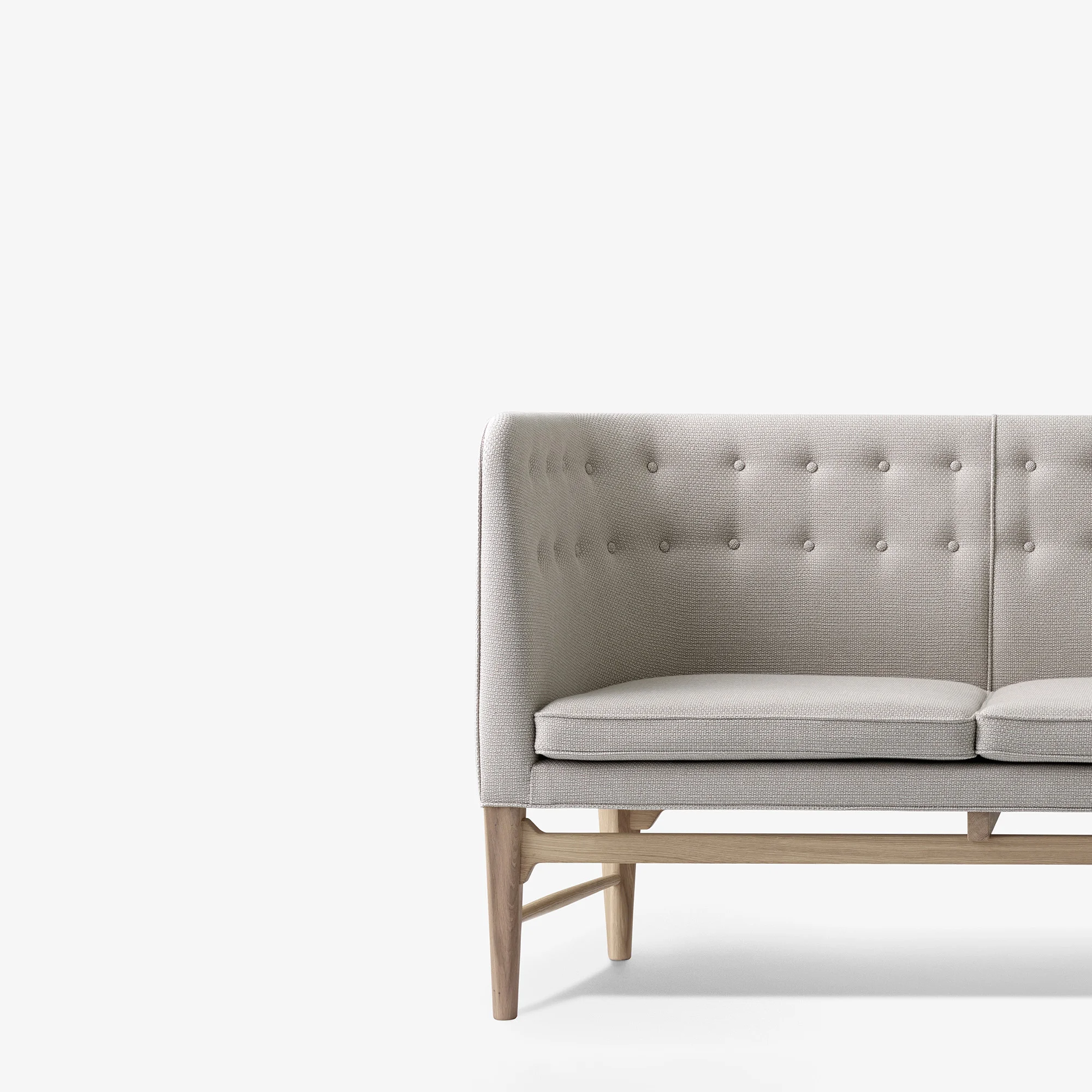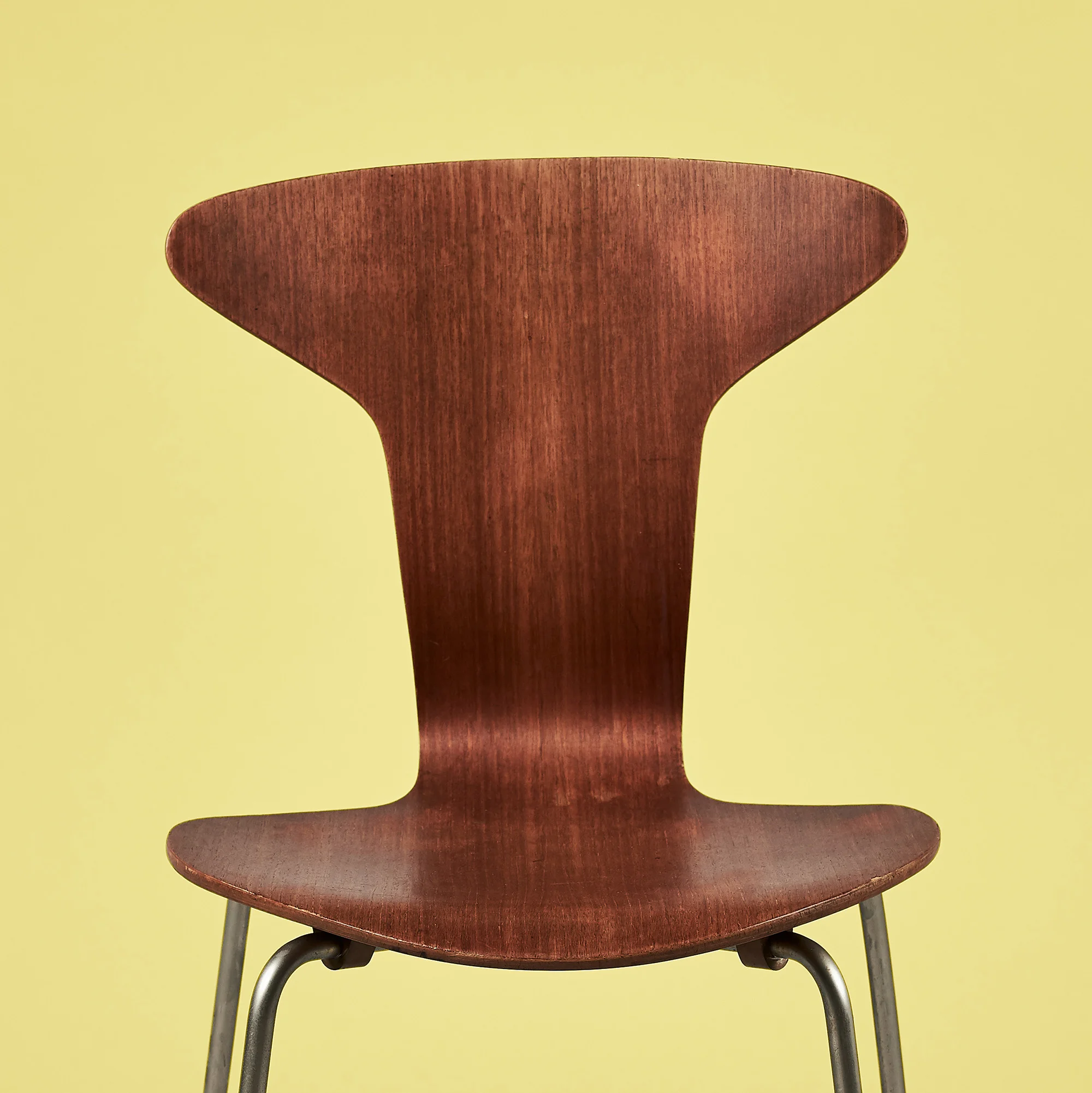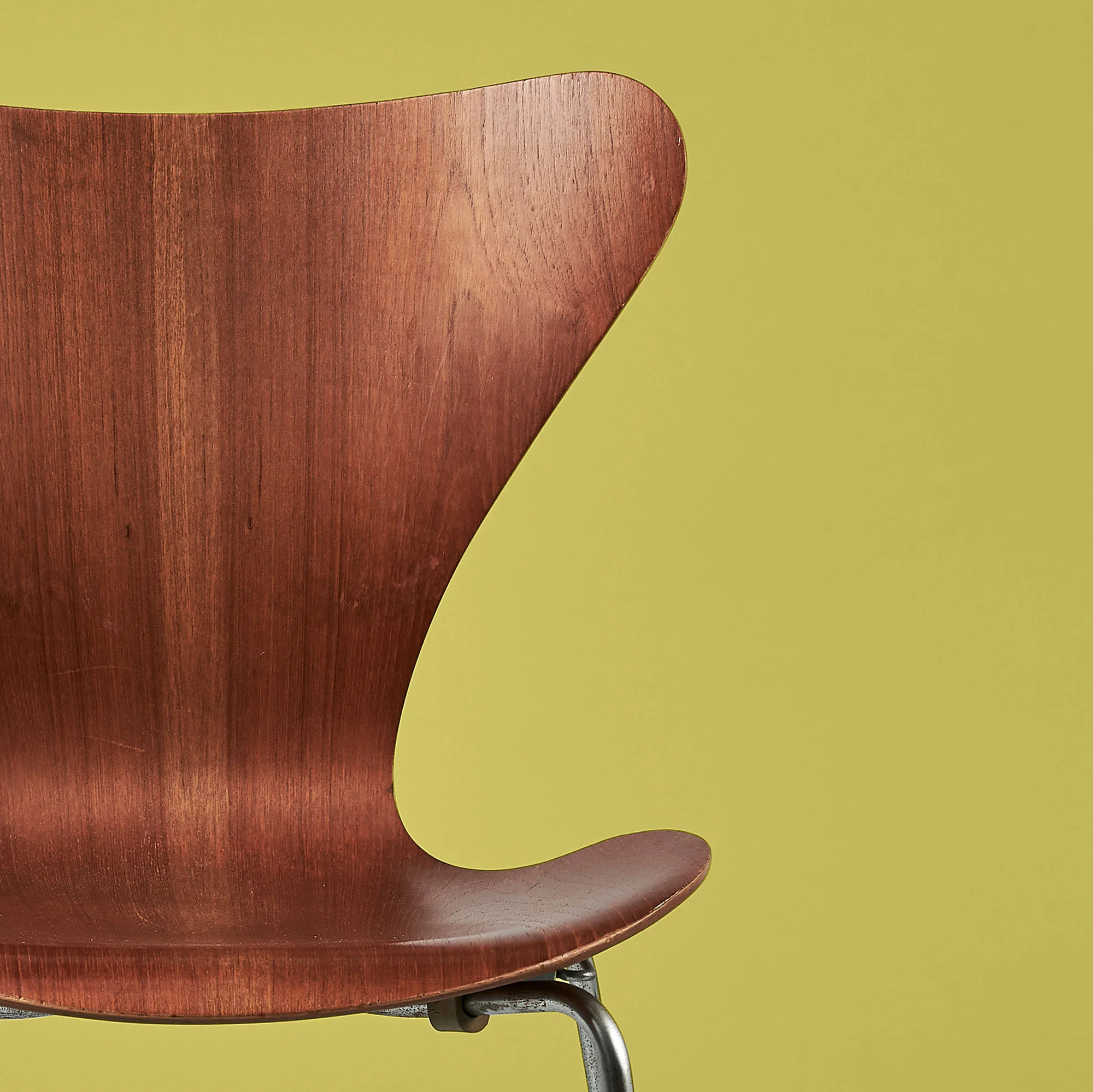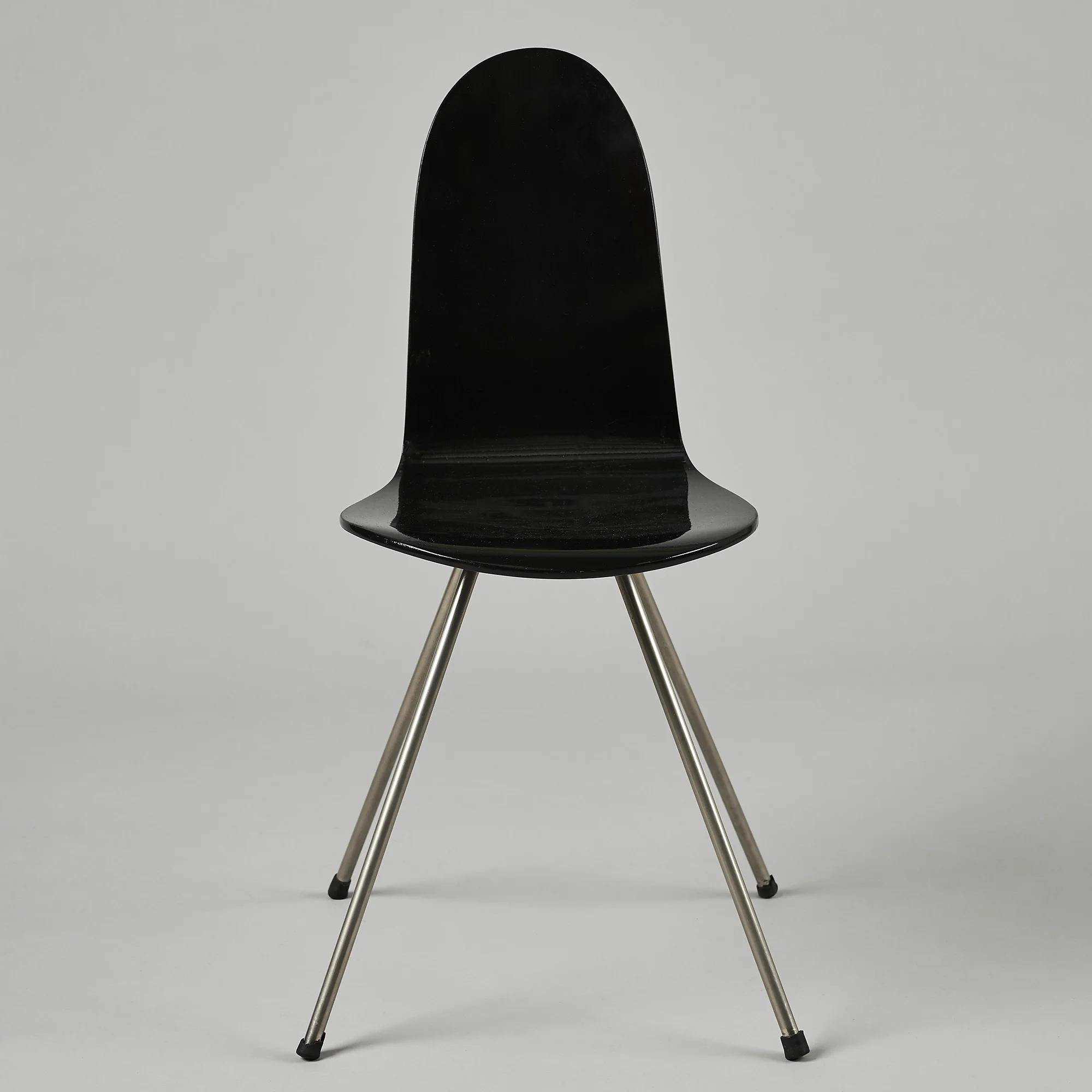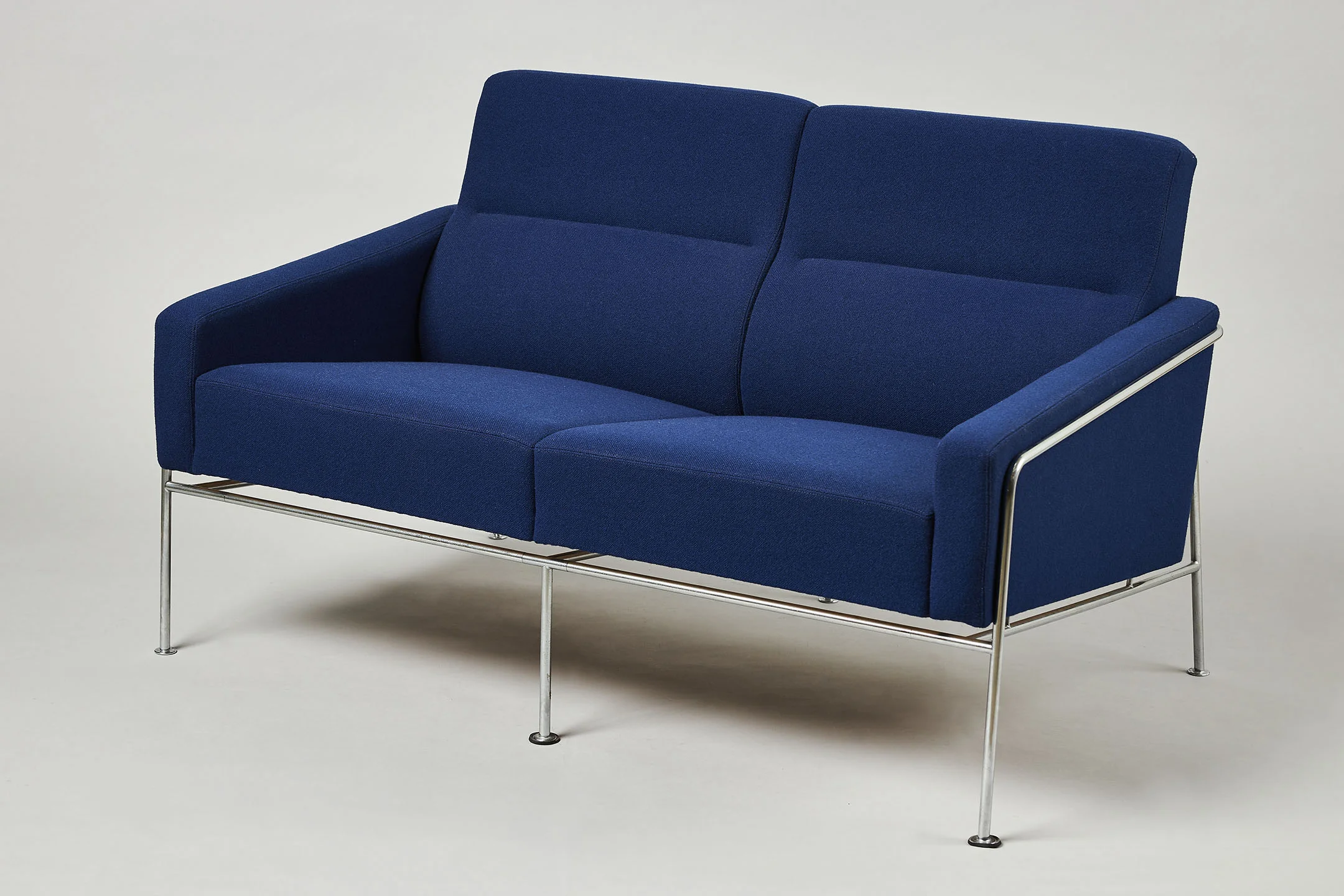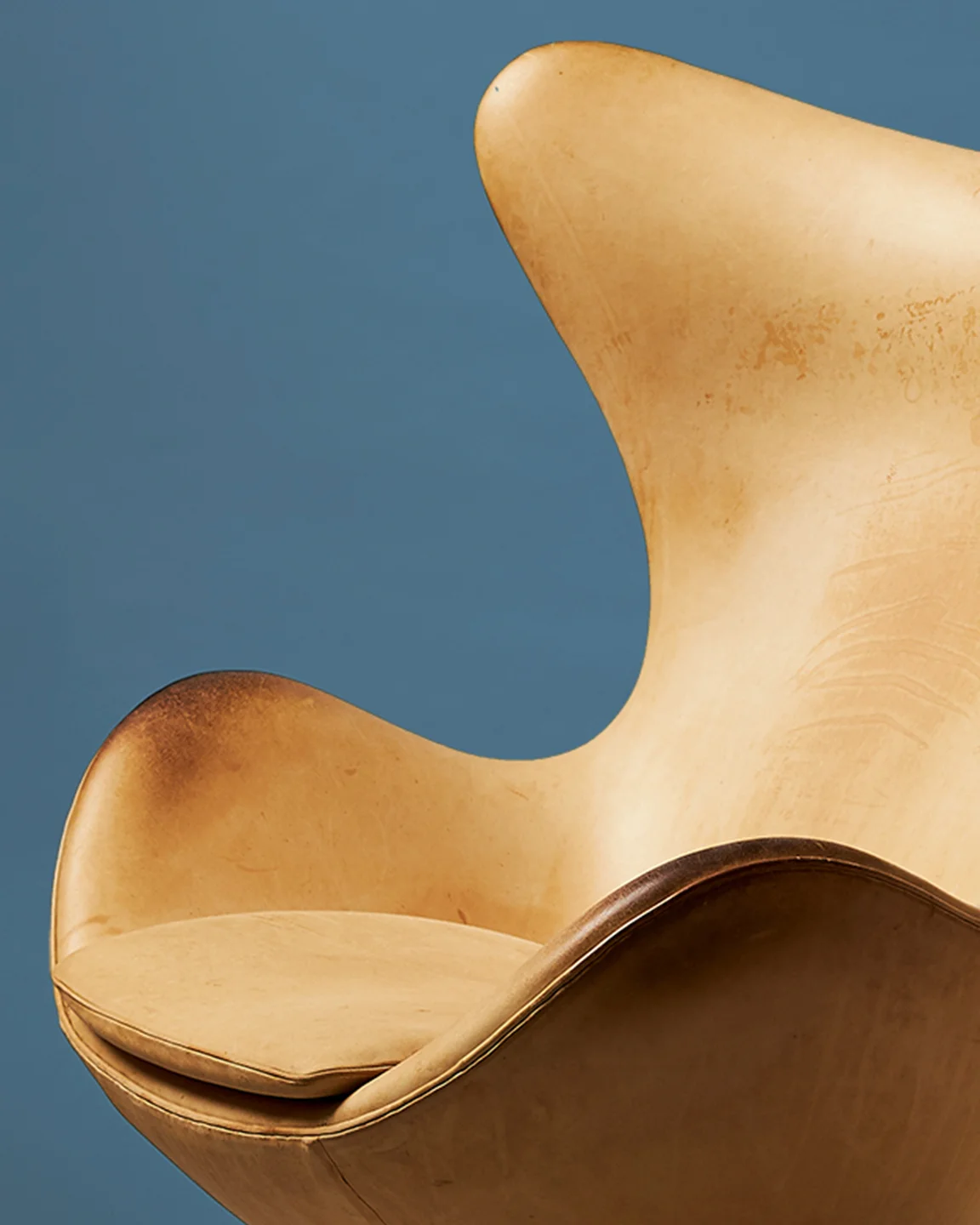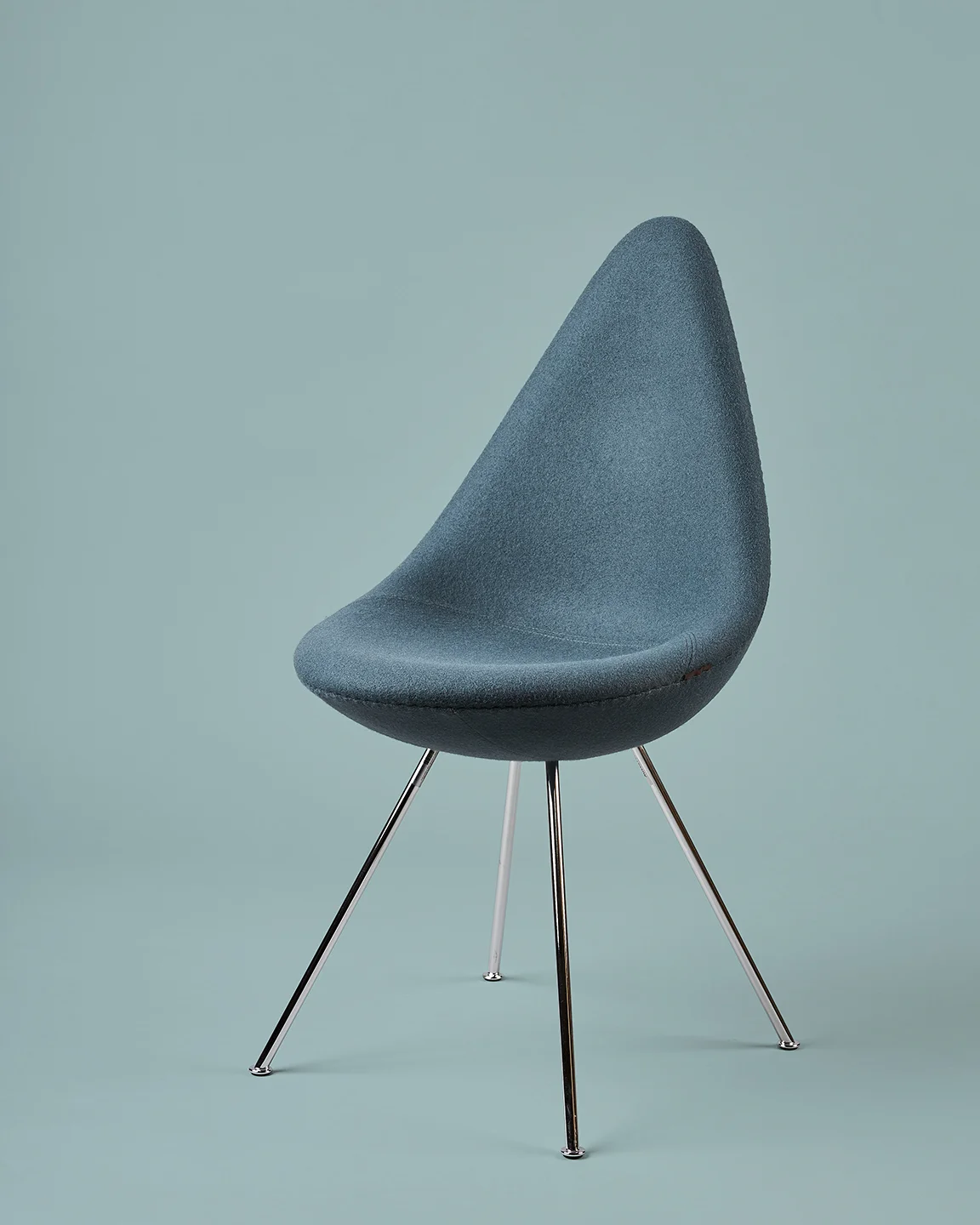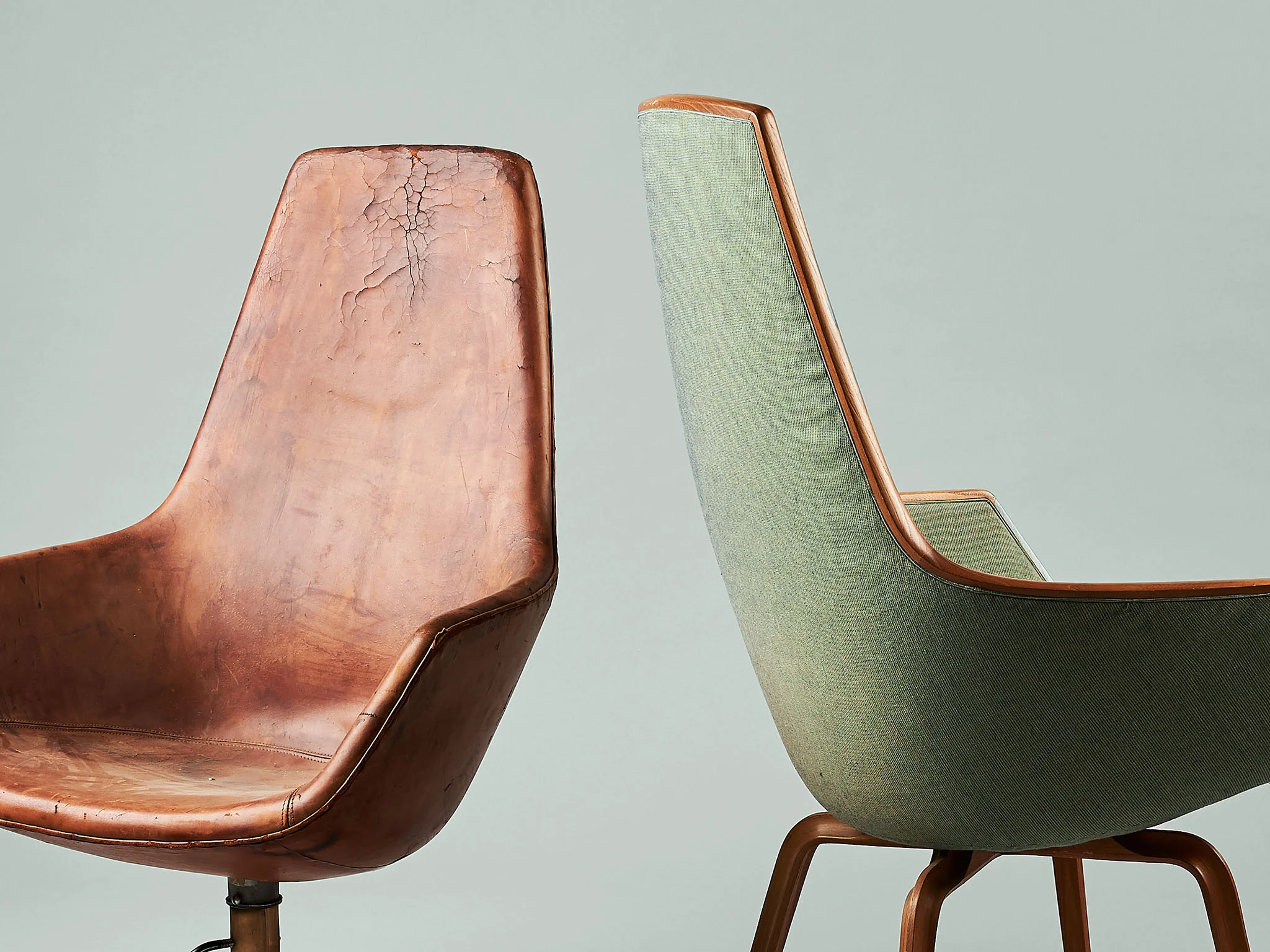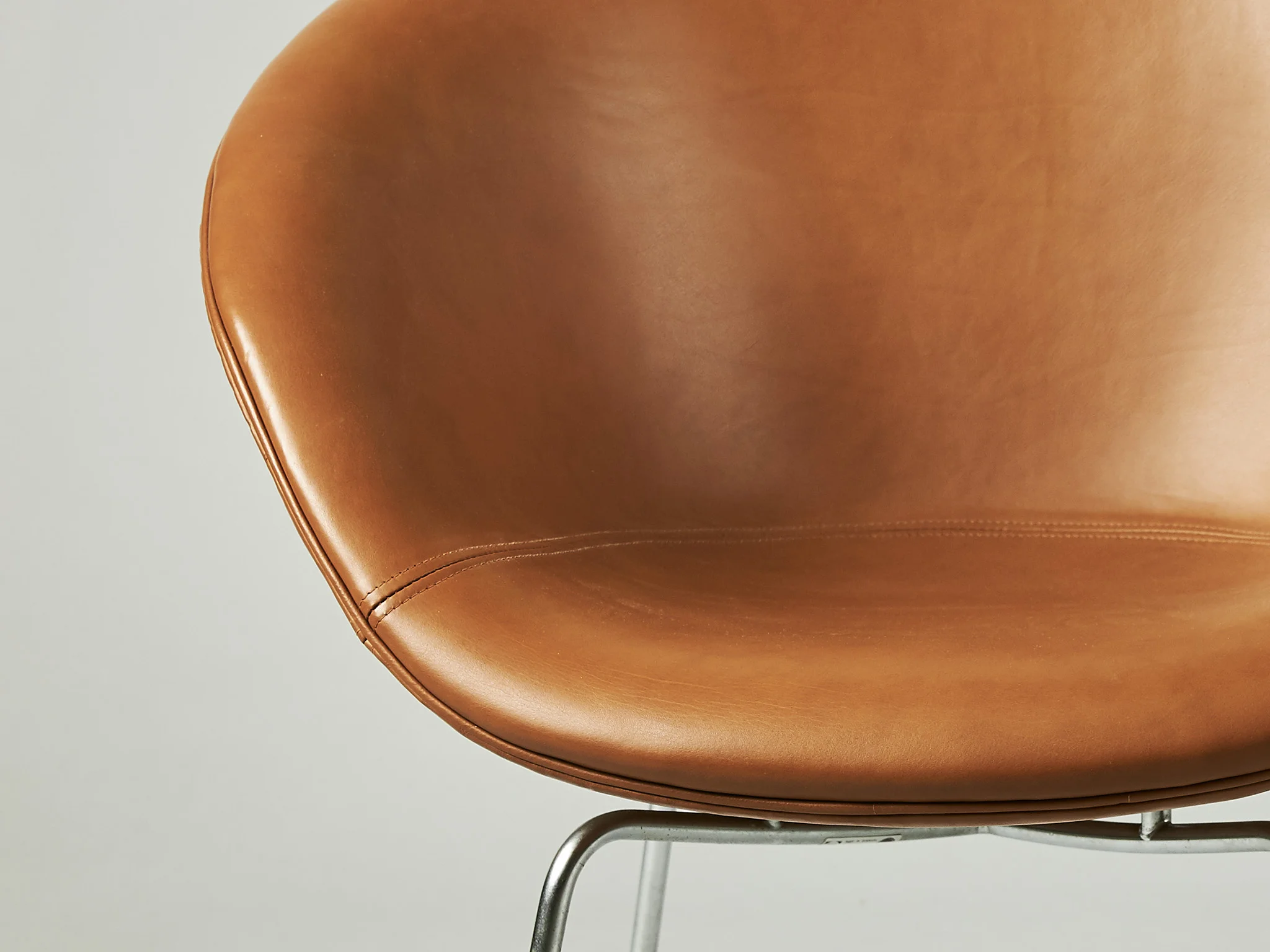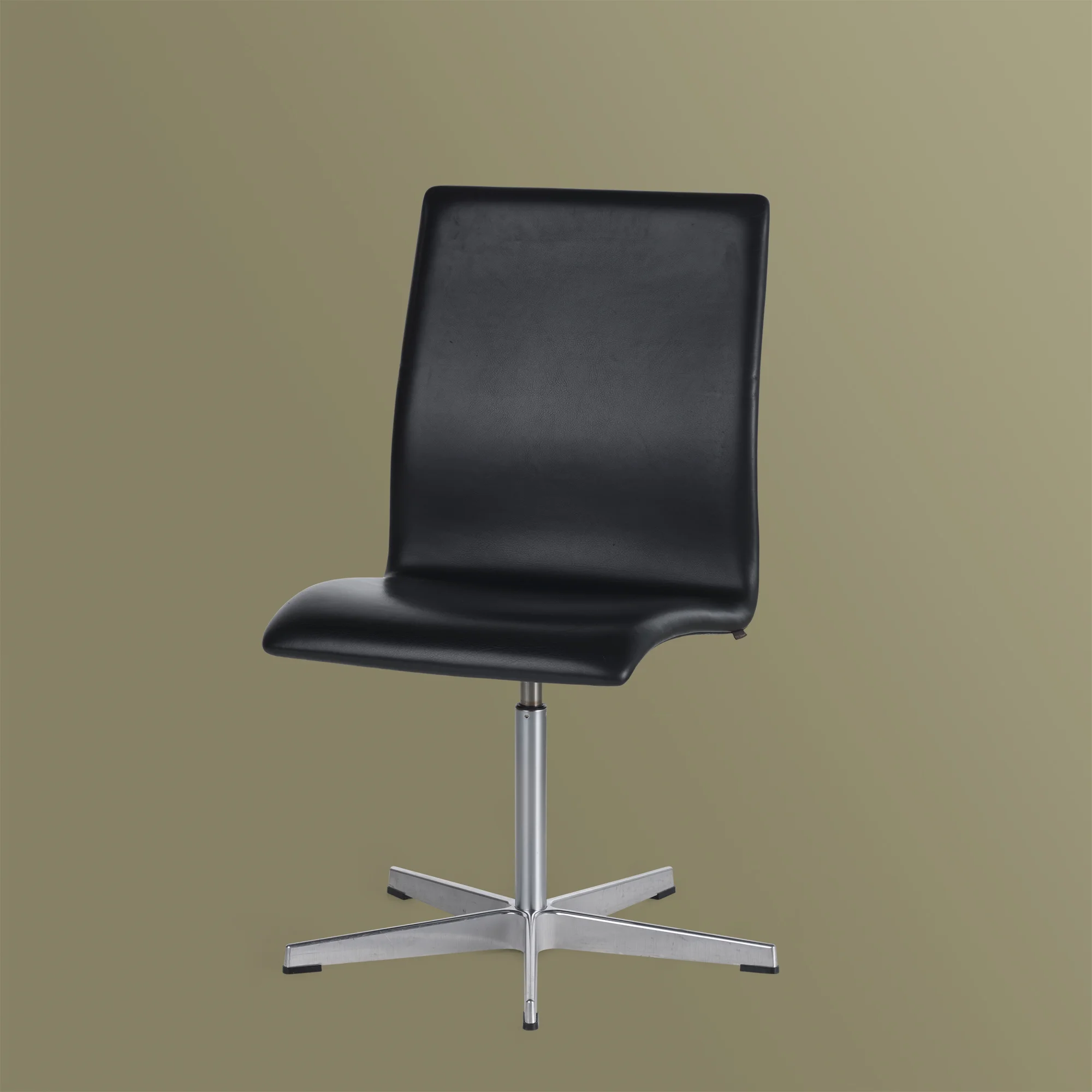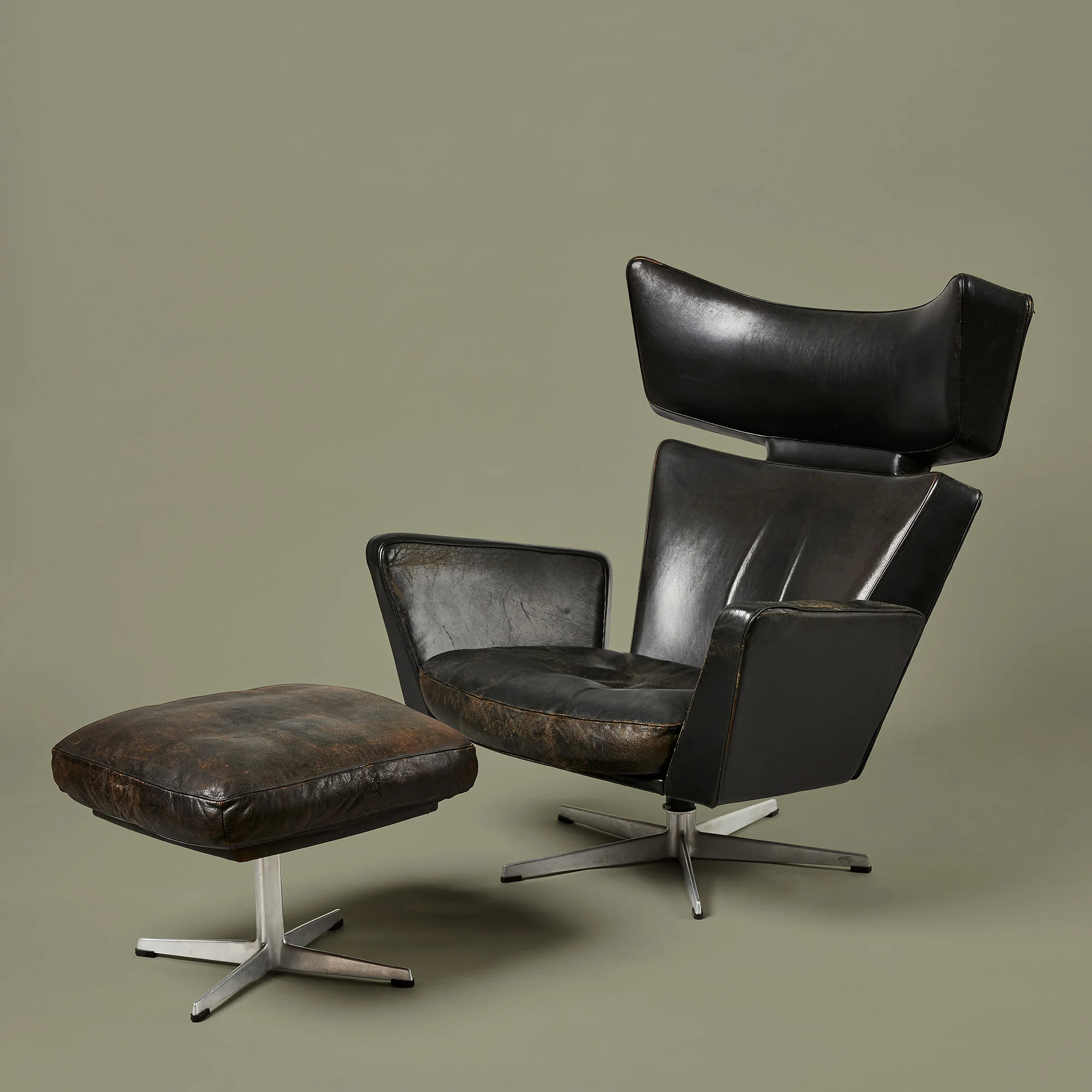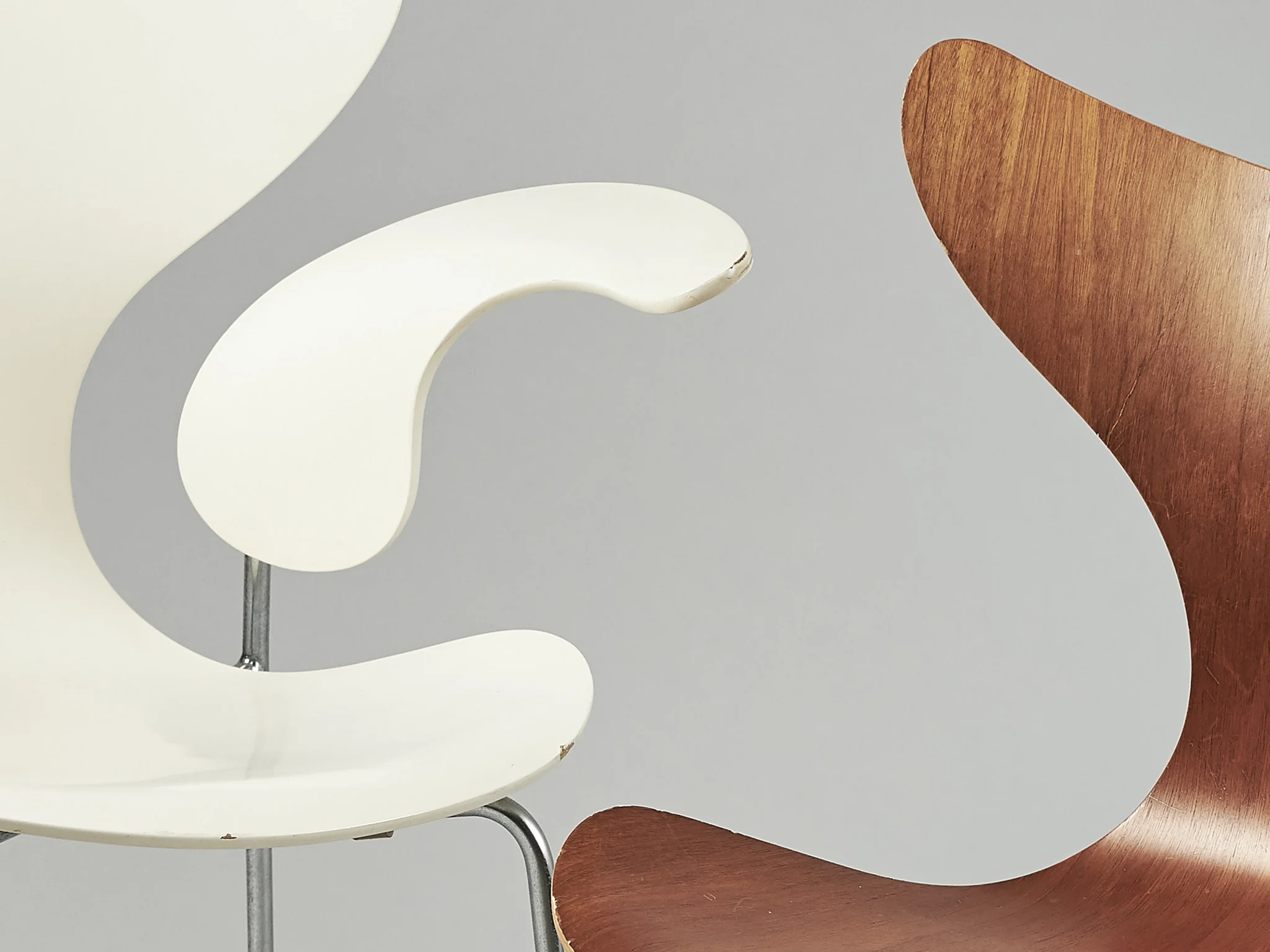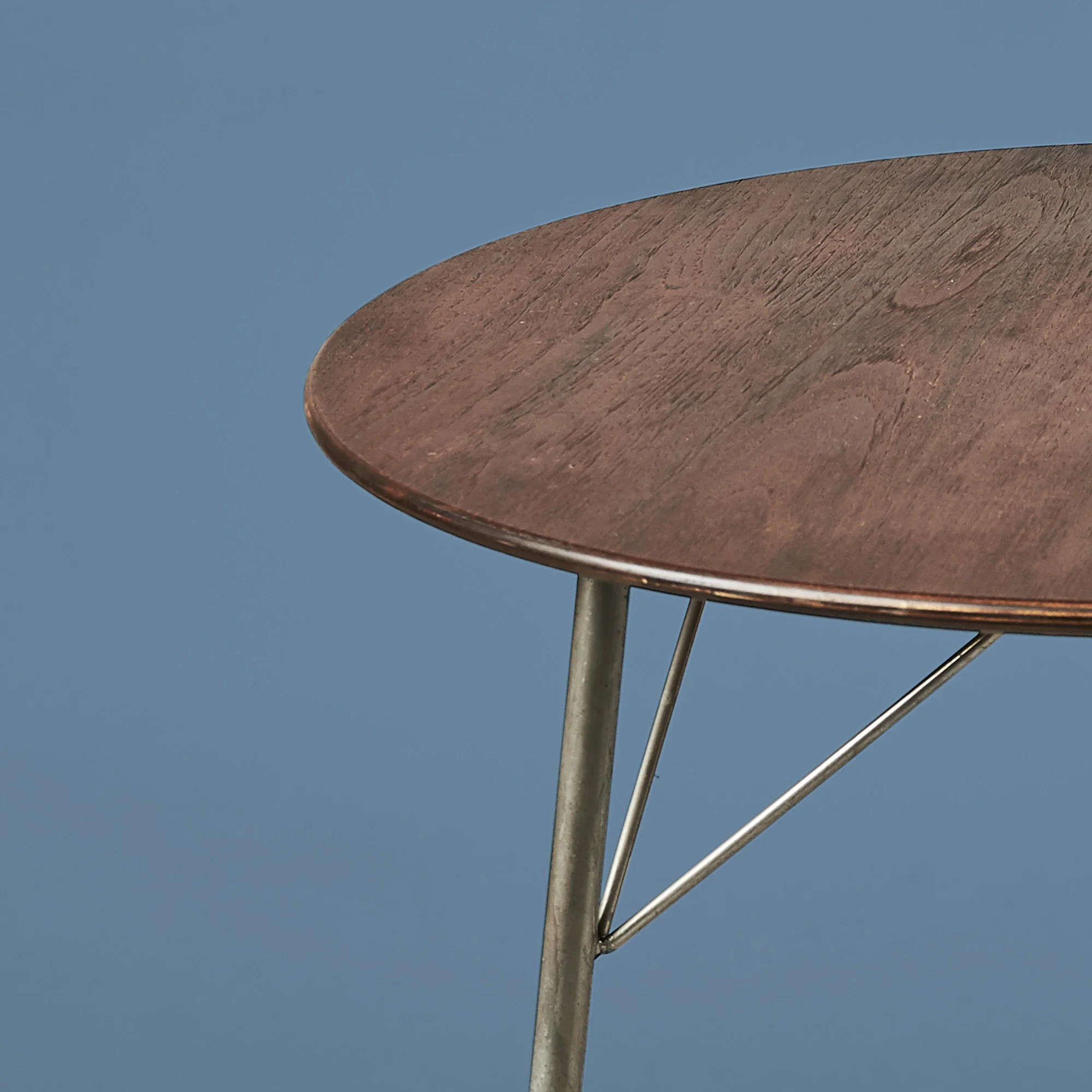In October 1952, Arne Jacobsen and furniture manufacturer Fritz Hansen wrote design history when they launched the Ant chair. The first setting where it was used was the new canteen at Novo Terapeutisk Laboratorium (now: Novo Nordisk) in Frederiksberg. The small, lightweight shell chair was the first of its kind, with seat and back shaped in a single sheet of plywood. Arne Jacobsen took advantage of the new capacities of industrial mass production to create a chair that combined light industrial materials with an organic and minimalistic expression. The result was a game-changer, and ever since its launch in 1952, the Ant has held a prominent place in Danish and international design history.
The Ant
The groundbreaking design of the Ant was driven by Arne Jacobsen’s artistic approach to design and new methods of production.
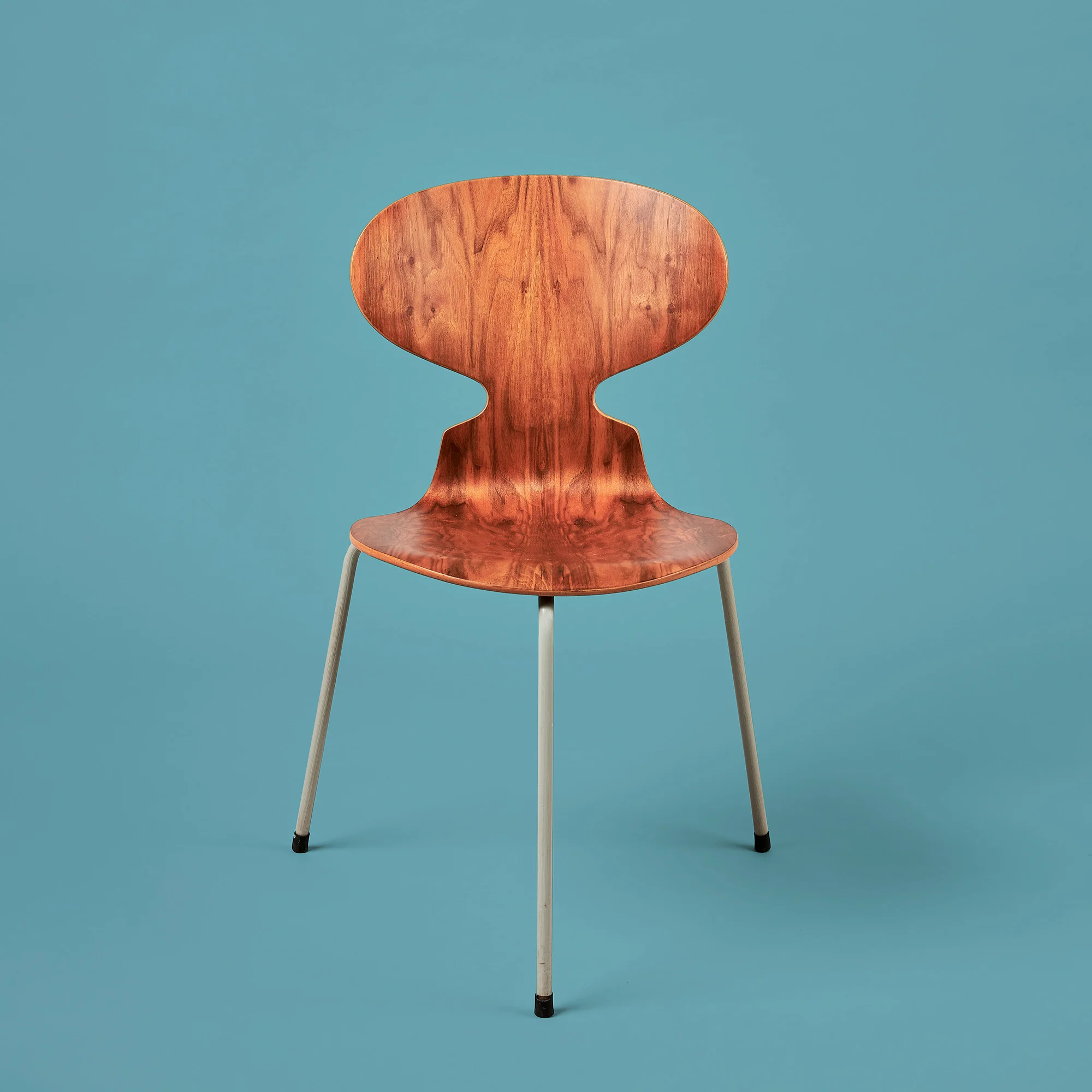
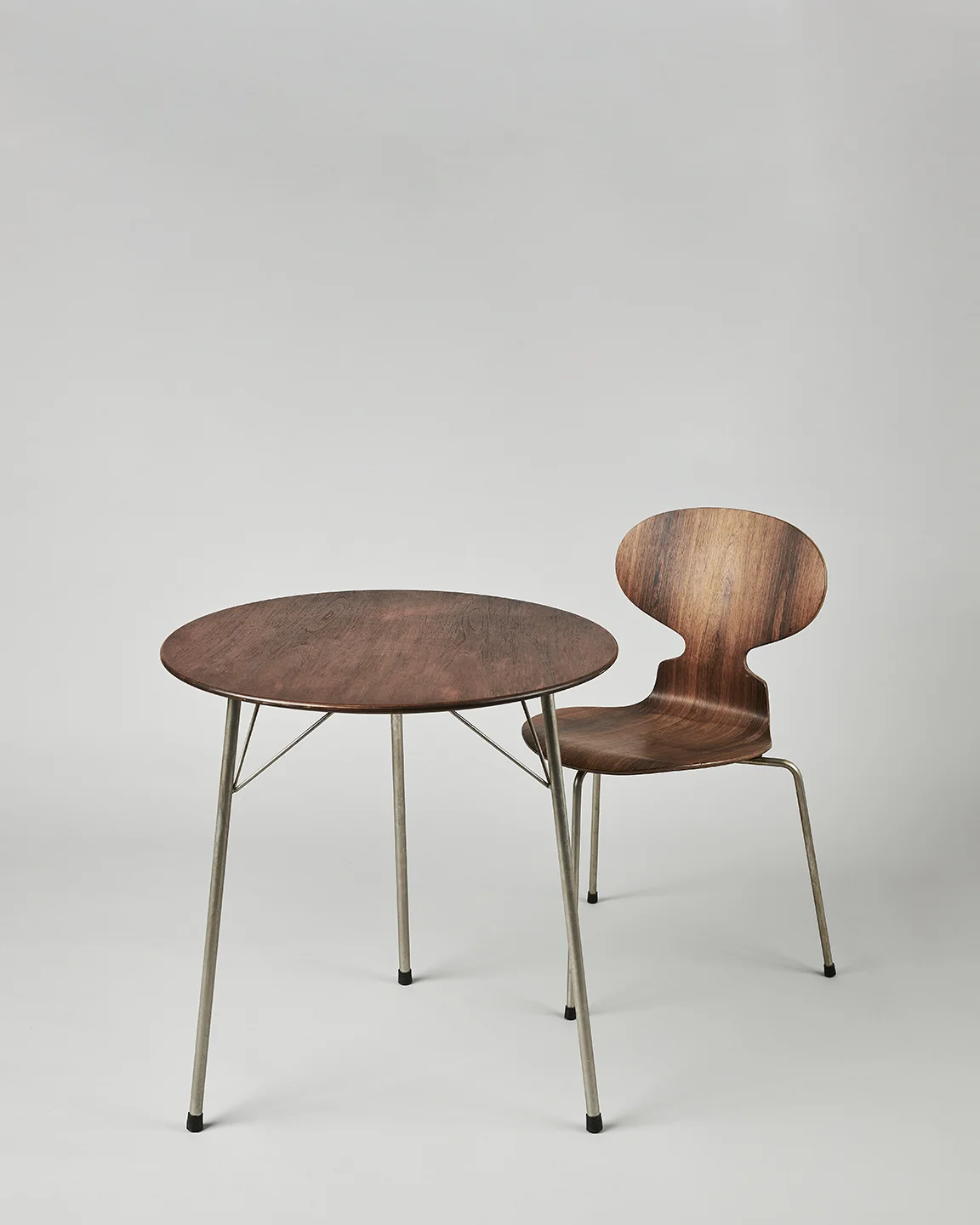
The ambition of creating a simple, elegant and hardwearing chair was achieved with a new production technology, where seat and back could be shaped as a single double-curvature shell in plywood. The double curvature was crucial to the strength of the chair. Arne Jacobsen has described how he used clay in the development process and worked in three dimensions, as a sculptor, in order to arrive at the unique shape. The back’s characteristic narrow waist reflects a functional requirement: the point of the most pronounced curvature had to be the narrowest part of the chair. With the Ant, Arne Jacobsen and Fritz Hansen had created a completely new chair type, and over the next two decades, Arne Jacobsen developed a whole range of chairs with new, elegant silhouettes that were produced by Fritz Hansen.
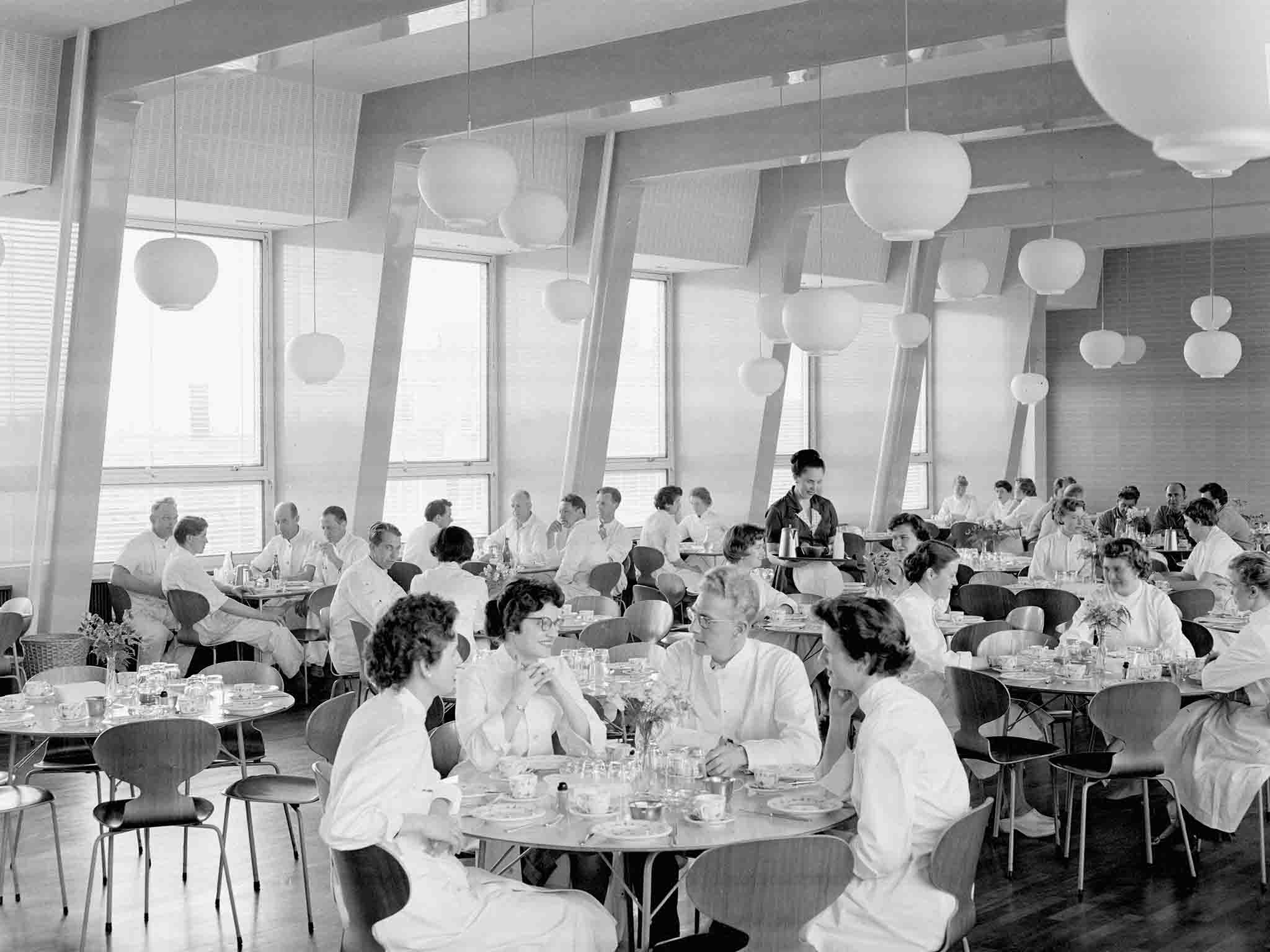
Manufactured by
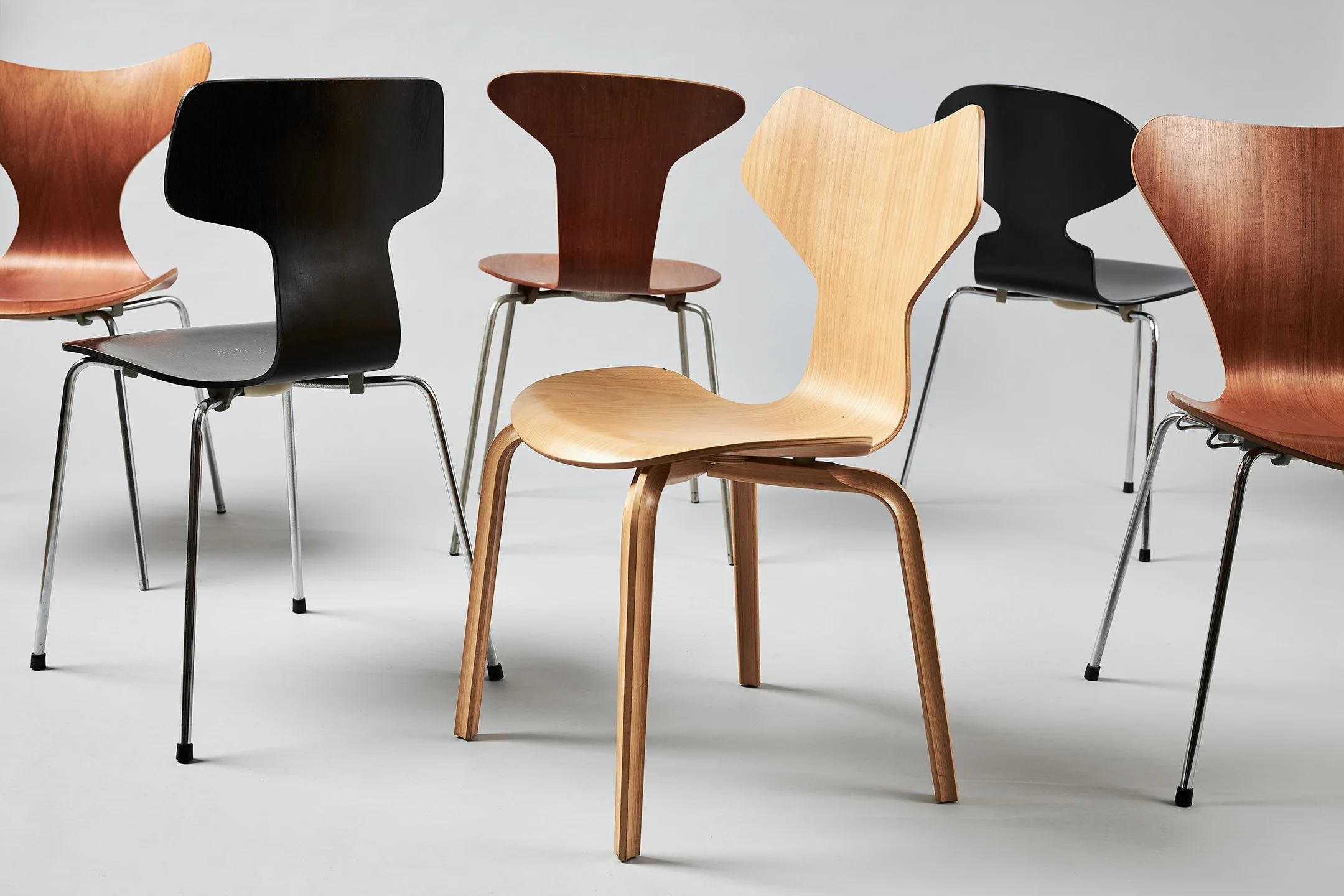
With the Ant, Arne Jacobsen and Fritz Hansen had created a completely new chair type, and over the next two decades, Arne Jacobsen developed a whole range of chairs with new, elegant silhouettes that were produced by Fritz Hansen.

In his development of the Ant, Arne Jacobsen took on a challenge that many of his fellow architects and designers were grappling with at the time: the ambition of creating a small, practical chair that matched the modern home as well as the conditions of industrial manufacturing was one he shared with fellow architects such as Finnish-American Eero Saarinen (1910-1961), Finnish Alvar Aalto (1898-1976) and American Charles (1907-1978) & Ray Eames (1912-1988). After the Second World War, the Eameses, among others, experimented with moulded plywood, and during the early 1950s, Arne Jacobsen kept their 1946 LCM chair in his studio for inspiration. However, the groundbreaking innovation – creating the seat and back in a single sheet of plywood – was pioneered by Arne Jacobsen.


In his development of the Ant, Arne Jacobsen took on a challenge that many of his fellow architects and designers were grappling with at the time: the ambition of creating a small, practical chair that matched the modern home.
Initially, Arne Jacobsen struggled to get Fritz Hansen to back his new chair design. However, Arne Jacobsen was also a savvy businessman, and when he was commissioned to design the interior of Novo Terapeutisk Laboratorium’s new canteen in the 1950s, he presented the model to Novo CEO Thorvald Pedersen. With a big order in place, production could now begin for one of the most significant furniture designs of the 20th century.
Arne Jacobsen developed the Ant chair with three legs, and throughout his life he insisted that this was the ideal solution, both functionally and aesthetically. In 1953, when he was asked about the idea behind the three legs, he replied, ‘Why should a chair have four legs when three are enough?’ The three-leg design should be seen in extension of Arne Jacobsen’s persistent efforts to rationalize designs and minimize both form and material consumption. Later, a four-legged model was developed that was not available as a standard product until after Arne Jacobsen’s death in 1971. Ever since, the Ant has been produced in both versions and in a wide range of finishes and colours.
Sources: Arne Jacobsen Design Archives. / Arne Jacobsen’s scrapbooks. The Royal Library – Danish Art Library. / Stenum Poulsen, K., Skaarup Larsen, A., & Staunsager, S. (2020). Arne Jacobsen – Designing Denmark. Kolding: Trapholt. / Thau, C., & Vindum, K. (1998). Arne Jacobsen. Copenhagen: Arkitektens Forlag. / Tøjner, P. E., & Vindum, K. (1994). Arne Jacobsen: arkitekt & designer. Copenhagen: Dansk Design Center.
